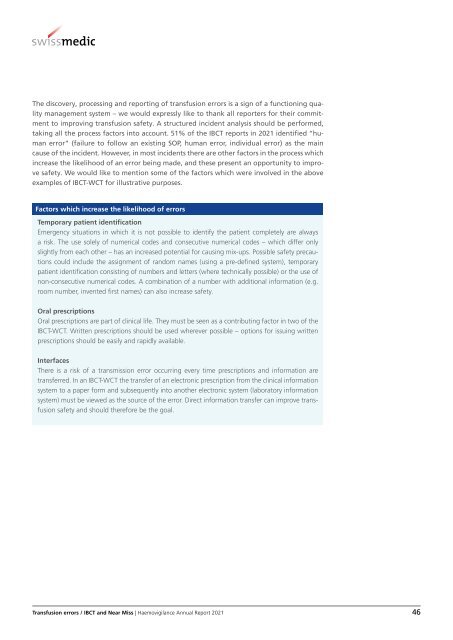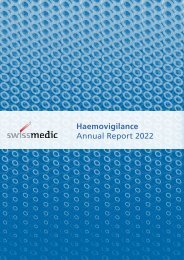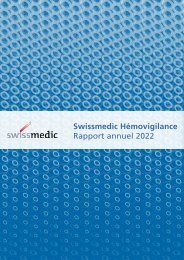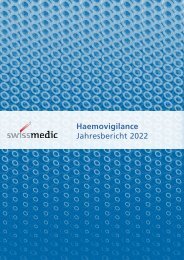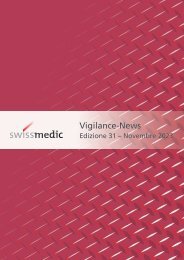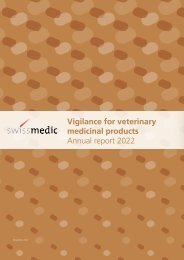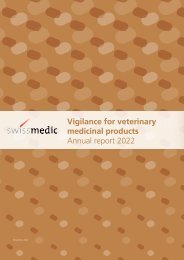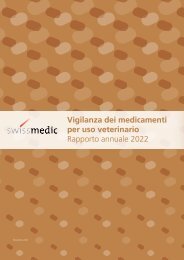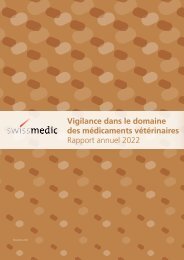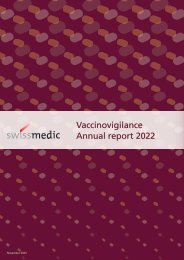Haemovigilance Annual Report 2021
Evaluation of haemovigilance reports in 2021
Evaluation of haemovigilance reports in 2021
Create successful ePaper yourself
Turn your PDF publications into a flip-book with our unique Google optimized e-Paper software.
The discovery, processing and reporting of transfusion errors is a sign of a functioning quality<br />
management system – we would expressly like to thank all reporters for their commitment<br />
to improving transfusion safety. A structured incident analysis should be performed,<br />
taking all the process factors into account. 51% of the IBCT reports in <strong>2021</strong> identified “human<br />
error” (failure to follow an existing SOP, human error, individual error) as the main<br />
cause of the incident. However, in most incidents there are other factors in the process which<br />
increase the likelihood of an error being made, and these present an opportunity to improve<br />
safety. We would like to mention some of the factors which were involved in the above<br />
examples of IBCT-WCT for illustrative purposes.<br />
Factors which increase the likelihood of errors<br />
Temporary patient identification<br />
Emergency situations in which it is not possible to identify the patient completely are always<br />
a risk. The use solely of numerical codes and consecutive numerical codes – which differ only<br />
slightly from each other – has an increased potential for causing mix-ups. Possible safety precautions<br />
could include the assignment of random names (using a pre-defined system), temporary<br />
patient identification consisting of numbers and letters (where technically possible) or the use of<br />
non-consecutive numerical codes. A combination of a number with additional information (e.g.<br />
room number, invented first names) can also increase safety.<br />
Oral prescriptions<br />
Oral prescriptions are part of clinical life. They must be seen as a contributing factor in two of the<br />
IBCT-WCT. Written prescriptions should be used wherever possible – options for issuing written<br />
prescriptions should be easily and rapidly available.<br />
Interfaces<br />
There is a risk of a transmission error occurring every time prescriptions and information are<br />
transferred. In an IBCT-WCT the transfer of an electronic prescription from the clinical information<br />
system to a paper form and subsequently into another electronic system (laboratory information<br />
system) must be viewed as the source of the error. Direct information transfer can improve transfusion<br />
safety and should therefore be the goal.<br />
Transfusion errors / IBCT and Near Miss | <strong>Haemovigilance</strong> <strong>Annual</strong> <strong>Report</strong> <strong>2021</strong><br />
46


